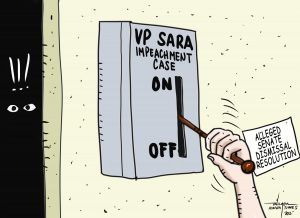Naawan, Misamis Oriental (MindaNews) – March 8 is declared by the United Nations as the International Women’s Day. The historic basis was March 8, 1917, the day when women in Russia were considered equal to men in enjoying the right of suffrage.
Isn’t it ironic that the right of suffrage was first enjoyed by women in Revolutionary Russia not in France, the land of liberty, fraternity and equality, or in the democratic USA, the land of the brave and the free?
Time was when being a woman was considered an abominable fate. The Jews expressed this view in their prayer that says: Thank you, Lord, that I was not born a gentile or born a woman.”
Female infanticide was practiced for centuries in ancient China. A girl, especially the first born was bad luck and would become a family burden and thus was disposed of immediately upon birth.
In those days women were considered a property like a beast of burden that were traded of or sold by their owner.
The worst fate that befell women was the Hindu practice of Sati or widow burning that persisted until the 19th century where wives were cremated alive with their dead husbands. Equally cruel and vicious was the witch hunting in the Dark Ages were women accused of sorcery and black magic were burned at stake alive.
In present day India women are still treated so low that they are gang-raped inside a bus or a train in the presence of passengers who often turn a blind eye to what is happening before them.
There had been so much discrimination in the treatment of women. Among the Jews, only women can be guilty of the crime of adultery and were stoned to death.
Once the floodgate of gender equality was opened in Russia in 1917, women have gone a long way in their struggle for equal treatment.
While before they were considered as property and could own nothing, generally women may now own what they wish for and can afford. While in the past, women were consigned to occupations that were considered physically and intellectually less demanding, women are now in all jobs, professions or careers once reserved for men, say, as bus or cab drivers, heavy equipment operators, commercial pilots, mining engineers, as members of the security forces of the state and many more.
Nonetheless, biases still exist against women in the labor market. For instance some establishments are adverse in hiring women because of the very nature of their being. When a female employee marries, she likely would get pregnant and her mandatory maternity privilege incurs unproductive cost to the company. So are the work disruptive absences she would later incur due to some imperative in child-rearing.
Also, comparing all working women to all working men, a US study (Pay Scale, 2016) showed that women earn 78 cent, or 22 cent less, for every $1 earned by men. The pay gap is still not zero once all compensable factors such as experience, industry and job level are accounted for.
In fact, when an equally qualified man and woman do the same job, the woman earns 97.8 cents, or 2.2 cent less, for every dollar earned by the man.
And there are relatively few women at the top. Women are still poorly represented at the higher levels of the talent pipeline. There are few women executive officer, director and manager. Moreover, women are poorly represented in the fields of politics and governance.
Nonetheless, the global struggle for gender equality has not ebbed and the gap between men and women in various facets of life is getting narrower and narrower over time.
(MindaViews is the opinion section of MindaNews. William R. Adan, Ph.D., is retired professor and former chancellor of Mindanao State University at Naawan, Misamis Oriental, Philippines)
By William R. Adan



